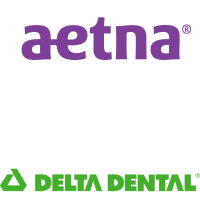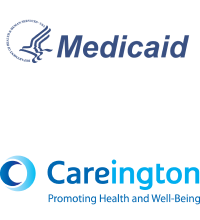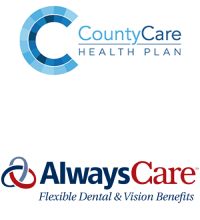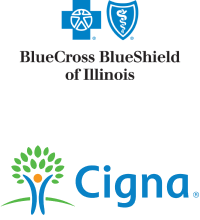Early Age Orthodontics
Phase I and Phase II Orthodontic Treatment
Are you considering orthodontic treatments for your child? Early age orthodontics is becoming a popular choice for many parents.
The goal of early age orthodontics is to intervene in the development of children’s teeth and jaws while they are still growing to avoid the need for more extensive treatment later in life. This type of orthodontic treatment is divided into two phases, Phase I and Phase II, and can help to prevent more serious dental problems from developing later in life.
At Orthodontic Experts, our experienced team of orthodontists can provide personalized and effective early age orthodontic treatment to help your child achieve a straight and healthy smile. Let’s dive into more details!
What is Early Age Orthodontics?
Early age orthodontics is the process of providing children with early treatment for orthodontic conditions such as dental crowding, misaligned bites, jaw discrepancies and protruding teeth. This type of treatment is usually done using two phases which are referred to as Phase I and Phase II.
Phase I generally begins between the ages of 7 and 10, when your child’s adult teeth have just begun to come in. During this stage, appliances such as braces or expanders may be used to prevent or correct problems that can’t be managed with other methods, such as surgery or tooth extraction. Additionally, Phase I may address issues that could cause problems when the adult teeth come in later on.

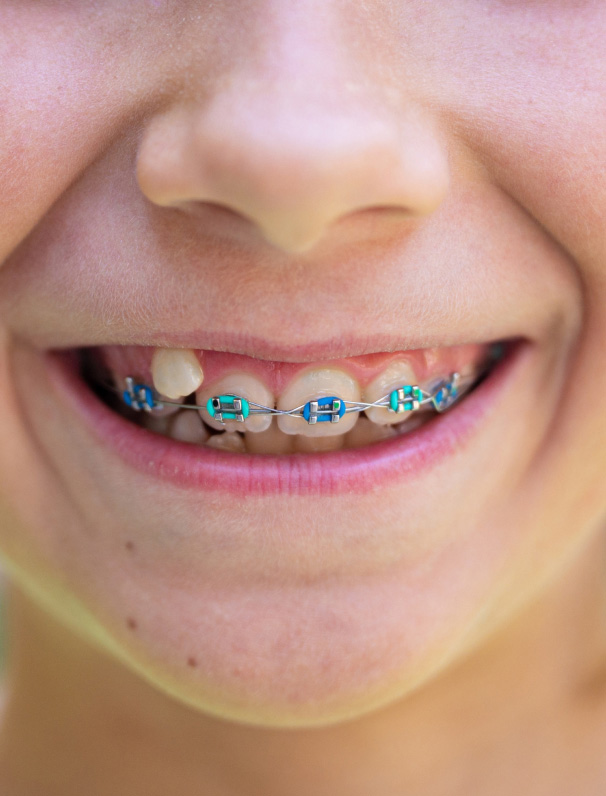
Benefits of Early Orthodontic Treatment
Early orthodontic treatment is designed to prevent minor orthodontic issues from becoming major ones. It is recommended that children get their first orthodontic evaluation at age 7. Early treatment allows your orthodontist to:
1. Monitor Growth and Development
During early orthodontic treatment, your orthodontist can monitor your child’s teeth and jaw growth to ensure they are developing properly. They can identify problems that may occur, such as overcrowding, and can take steps to prevent them from becoming more severe with age.
2. Correct Bite and Jaw Problems
Phase I orthodontic treatment is specifically designed to address bite and jaw problems. Correcting these issues early on can help prevent more serious complications in the future such as speech difficulties and difficulty chewing.
3. Correct harmful oral habits
Certain oral habits can harm your child’s teeth and jaw. Thumb sucking, prolonged pacifier use, mouth breathing, and tongue thrusting are some common habits that can result in future dental problems such as bite issues, speech problems and a change in the shape of the mouth’s roof. Early orthodontic treatment can correct these habits and promote healthy dental development.
4. Improve Appearance and Boost Self-esteem
Children with crooked teeth or misaligned jaws are often teased or bullied, which can affect their self-esteem. Early orthodontic treatment can help improve the appearance of your child’s smile and boost their confidence.
5. Reduce the chances of impacted teeth
Early orthodontic treatment can lower the chances of your child’s permanent teeth becoming impacted (trapped) in the gum due to crowding. Orthodontic Experts can align and straighten your child’s teeth to create enough space for their permanent teeth, which will gradually appear in the future.
6. Improve speech
Certain speech problems such as lisping and difficulty pronouncing words can be corrected with early orthodontic treatment. At Orthodontic Experts, we have helped many children overcome their speech impediments through orthodontic treatment.
7. Create space for erupting permanent teeth
Early orthodontic treatment can create additional space for permanent teeth to grow. Through careful monitoring, Orthodontic Experts can determine if your child’s teeth are developing correctly and provide the necessary orthodontic treatment to create ample space for your child’s permanent teeth.
Who needs a Two-Phase Orthodontic Treatment?
Early age orthodontics is a two-phase orthodontic treatment that is designed to correct orthodontic issues that cannot be adequately treated during adolescence. It is usually recommended for children between the ages of 6 and 8.
The two-phase treatment is aimed at intercepting potential problems early on and correcting them in a more efficient manner. This type of treatment is particularly beneficial for the following conditions:
- Severe crowding
- Protruding teeth
- Extreme overbite or underbite
- Abnormal swallowing habits
- Tongue thrusting habits
- Crossbite or incorrect jaw growth
- Missing or extra teeth
- Significant damage to permanent teeth caused by thumb sucking or prolonged pacifier use

Phase 1 involves using braces to improve overcrowding, create more space in the mouth, move the jaw into the correct position, and lay the foundation for proper tooth alignment and jaw growth over time.
Phase 2 begins when all permanent teeth have erupted, usually between ages 12 and 14, and focuses on refining and perfecting the smile with braces, retainers, as needed.

Phase I Orthodontics
Early Interceptive Treatment
The term “early interceptive orthodontic treatment” (also known as “Phase I”) is defined as an organized approach to the early diagnosis, prevention, interception and correction of skeletal and dental irregularities related to healthy, growing patients. The goal of Phase I treatment is to improve the overall facial balance, dental development, and alignment of teeth.
Phase I orthodontic treatments can provide a number of benefits for both pediatric patients and their parents. By starting treatment at an early age, orthodontists can:
- Reduce the amount of time spent in braces later on by correcting certain dental and skeletal issues that may be otherwise impossible or very difficult to address
- Help ensure a patient’s jawbones are growing properly
- Improve facial appearance by creating better harmony between upper and lower jaws
- Help reduce risk of cavities by correcting improper bite relationships that can lead to food and bacteria trapping
- Address certain issues sooner than later to prevent them from worsening over time
- Increase efficacy of full braces treatment in later years
- Facilitate full-mouth rehabilitation when multiple treatments are needed due to severe conditions
The timing for Phase I treatment varies depending on a number of factors, such as the severity and complexity of misalignment issues, medical needs related to growth patterns, family history and other individual factors like thumb- sucking habits or mouth breathing. Ultimately it is up to orthodontists to determine when Phase I Orthodontic Treatment should be started for each individual patient based on their unique needs and concerns.
Common Orthodontic Therapies Used in Phase 1 Treatment
At Orthodontic Experts, we know that every patient is unique, and we understand that different treatment options may be required to achieve the desired results. Our orthodontic specialists provide comprehensive consultations for each patient and will work closely with them to develop a customized treatment plan that meets their individual needs. We use the most advanced orthodontic technology and the latest techniques to provide cutting-edge and modern orthodontic treatment to our patients.
Specialized Retainers
The most common therapy used in Phase 1 treatment is the use of specialized retainers, which can be fixed or removable. Specialized retainers can prevent teeth from shifting, guide teeth into their proper positions, and help with jaw development to ensure that there is enough space for permanent teeth to erupt properly. At Orthodontic Experts, we use specialized retainers to help prevent future dental issues, such as teeth crowding that could require more extensive treatment.
Limited Phase of Braces
In some cases, a limited phase of braces is necessary in Phase 1 treatment. Orthodontic Experts recommend braces on just the selected misaligned teeth to guide the proper growth of dental arches. This type of therapy is usually applied when there are issues with severe overcrowding or malocclusions (bite issues) that would not be able to be treated sufficiently with braces alone.
Expansion Therapy
Another therapy that is commonly used in Phase 1 treatment is expansion appliances. Expansion appliances are similar to functional appliances and help correct jaw growth problems. These appliances are used to expand the roof of the mouth to create more space for crowded teeth and to make room for the proper alignment of permanent teeth.
Space Maintainers
If a child has lost primary teeth prematurely, a space maintainer may be needed to ensure that the permanent teeth come in without crowding. Space maintainers can be fixed or removable and are used to maintain the correct spacing between teeth so that the permanent teeth can grow and develop properly.
Removable Appliances
Removable appliances are used to move specific teeth into a better position without having to use fixed braces. There are several different types of removable appliances available including Herbst appliances, palatal expanders, removable space maintainers, lip bumpers and headgear. Removable appliances can be used in combination with other treatments such as metal braces or can be prescribed as an individual treatment.
Functional Appliances
Functional appliances help to move the jawbone into a more desirable growth pattern and can be used in conjunction with traditional braces or removable appliances, depending on the need of the patient. Common functional appliances used in early age orthodontic treatment include interference screws and jaw repositioning splints (JRS).
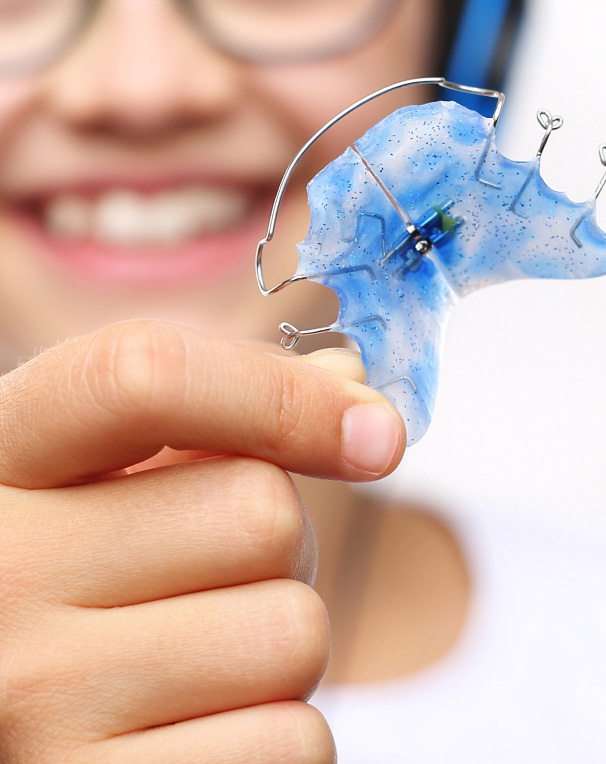
Phase II Orthodontics
Specialized Orthodontic Treatment
Once the dentist and patient have evaluated the malocclusion and determined that Phase II is necessary, Phase II orthodontic treatment can begin. During this phase, specialized orthodontic treatment will be administered to further address the malocclusion.
Phase II orthodontic treatment is individualized based on the patient’s diagnosis and may include any number of dental tools, such as braces, spacers, expanders, and retainers. The goal of this phase is to correct any remaining misalignments in order to ensure proper tooth alignment and a healthy bite.
The timing of Phase II treatment can vary depending on a number of factors such as the severity of misalignment or the presence of any structural issues. If more complex issues exist, such as jaw discrepancies or impacted teeth, then Phase II may need to begin at an earlier age than initially expected.
Under close monitoring by a skilled orthodontist and dentist, early age orthodontics can provide lasting results that prevent more complicated issues from developing as the patient grows into adulthood.
Common Orthodontic Therapies Used in Phase 2 Treatment
If orthodontic problems are detected early on, Phase I Orthodontic Treatment can help to reduce the need for more complex orthodontic treatments in the future. During Phase 1 Treatment, common therapies may include:
Expansion of the Upper Jaw and Palate
Expanding the jaw can fix crossbites and overbites early on, reducing the need for more intensive treatment down the line.
Partial Braces
Partial braces are sometimes used during Phase 1 Treatment to correct issues like crowding, narrow palates, or facial asymmetry.
Jaw Repositioning
With surgical intervention, minor repositioning of the jaw may be necessary to ensure proper alignment or bite as a child grows.
Phase II Orthodontic Treatment involves taking further action if issues detect during Phase I have not been fully corrected or if new orthodontic issues have developed since then. Common treatments in this stage of treatment may include:

Full Braces or Clear Aligners
During this phase full braces may be placed to address any remaining misalignment or malocclusion (problems with bite). In some cases, Clear Aligners might be used instead of full braces depending on a patient’s specific needs and preferences.
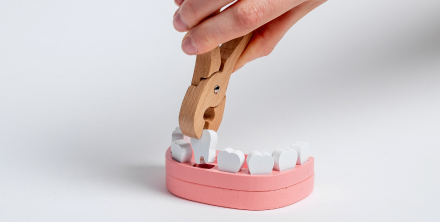
Extractions and Other Surgical Procedures
If overcrowding is severe, extractions of some teeth might be necessary to ensure that remaining teeth have enough room to align properly in the mouth. Meanwhile, certain types of soft tissue surgery can help reduce extra folds of skin that can cause problems with speech development or swallowing.
What’s the Difference between Phase I and Phase II Orthodontic Treatment?
When it comes to early age orthodontics, Phase I and Phase II are two distinct parts of the treatment process. But what are the differences between them?

Goals
The primary difference between the two phases is their goals. Phase I’s goal is to address issues that cannot wait until all of the permanent teeth have grown in, such as a misaligned bite, or other developmental issues that impact jaw growth. On the other hand, Phase II is aimed at making sure that all adult teeth are properly aligned and are in harmony with each other.

Treatment Strategies
The treatment strategies for each phase also vary. Phase I typically involves an early appliance such as a palatal expander, habit-breaker or a bite plate to help resolve any issues with jaw growth and development. In contrast, Phase II includes braces or Clear Aligners depending on the severity of misalignment, crowding and bite issues present in your mouth.

Age Ranges
The typical age range for these two phases can vary from one patient to another but generally phase I is done before the age of 14 while phase II takes place after this age. It’s important to remember that everyone is different so it’s best to consult with your orthodontist regarding which phase of treatment best suits your individual needs.
Phase I vs Phase II Orthodontics Cost
The cost of orthodontic treatments can vary greatly, depending on the type and length of treatment. Phase I orthodontic treatment is generally a shorter and less expensive treatment, while Phase II can be a longer and more costly method.
The exact price for both treatments will depend on a variety of factors, such as the complexity of the problem, the type of braces used, and any additional procedures that are needed. At Orthodontic Experts, the cost for Phase I orthodontic treatment ranges from $1,500 to $3,500 USD, while Phase II treatment averages between $3,000 and $6,000 USD. Of course, the exact price will depend on a variety of factors such as the complexity of the problem and the type of braces used.
It’s important to note that insurance policies may cover part or all of the cost of early age orthodontics, and Orthodontic Experts may offer discounts or payment plans to help make these treatments more affordable. Therefore, if you’re looking for the most reliable orthodontic treatment, Orthodontic Experts is a great choice for all your orthodontic needs.


Give Your Child a Confident Smile with Early Age Orthodontics at Orthodontic Experts
With early age orthodontic treatment, you’ll get the most comprehensive care possible. Phase I and Phase II treatment will help reduce the cost, time, and need for further treatment later in life. Additionally, it’s an investment not only in the esthetics of your smile, but also in the long-term health and function of your teeth.
Don’t let your child’s orthodontic problems go untreated! With our personalized and effective Phase I and Phase II orthodontic treatments, we can give your child the gift of a healthy and beautiful smile. So why wait? Schedule a no-cost initial appointment with us today and take the first step towards a lifetime of confident and beaming smiles!
frequently asked questions
When should my child begin early age orthodontics?
It is recommended that children have their first orthodontic evaluation by age seven. This allows our orthodontists to identify any potential dental problems early on and develop a personalized treatment plan for your child.
How long does Phase I orthodontic treatment take?
The duration of Phase I orthodontic treatment varies depending on the severity of your child’s dental problems. However, on average, this phase of treatment lasts about 9-12 months.
Does my child need Phase II orthodontic treatment?
Whether or not your child needs Phase II orthodontic treatment will depend on the results of their Phase I treatment. If their teeth are still not properly aligned, then Phase II treatment may be necessary. This phase of treatment typically involves traditional braces.
What is the difference between Phase I and Phase II orthodontic treatment?
Phase I orthodontic treatment is performed on children between the ages of seven and eleven and is designed to address problems with the jaw and teeth. Phase II orthodontic treatment is typically performed on children between the ages of 12 and 16 and focuses on straightening the teeth.
Is early age orthodontic treatment covered by insurance?
Many dental insurance plans cover early age orthodontic treatment. Our team at Orthodontic Experts will work with you to determine your insurance coverage and ensure that you receive the maximum benefits available to you.
What types of appliances are used in early age orthodontics?
There are several types of appliances that may be used in early age orthodontics, including braces, space maintainers, expanders, and retainers. The specific type of appliance used will depend on your child’s individual needs and treatment plan.



